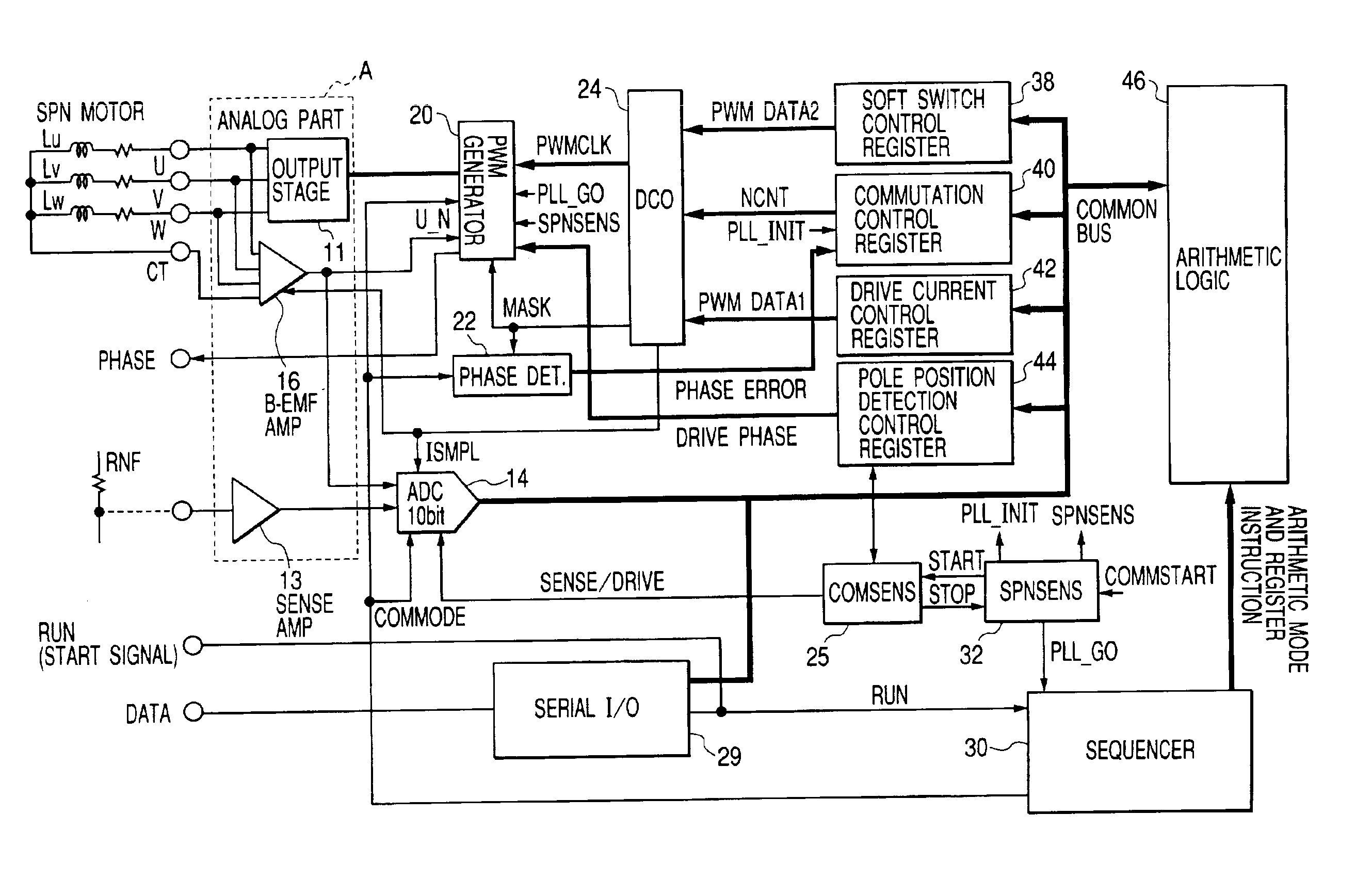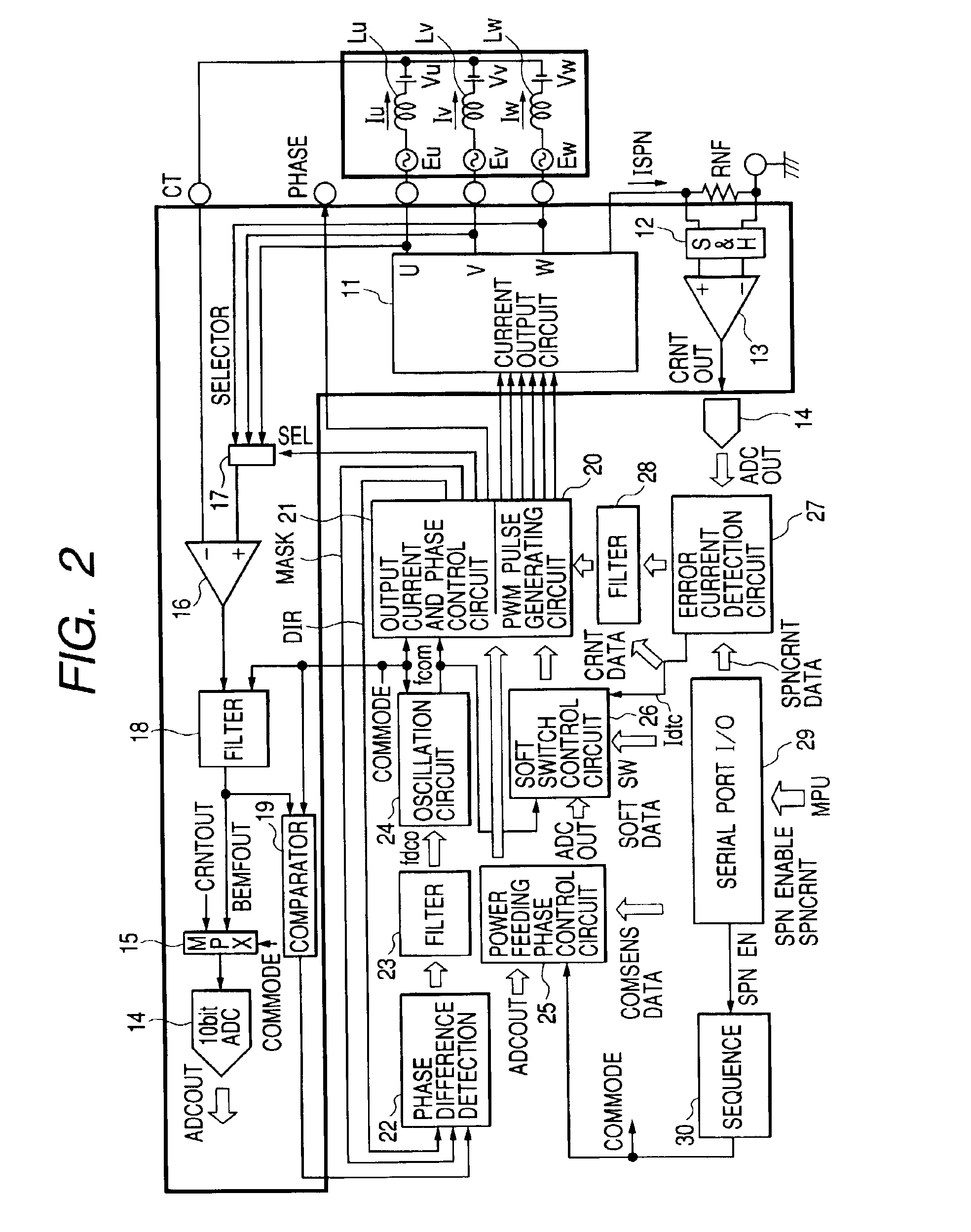Drive control system for sensor-less motor
a sensorless motor and control system technology, applied in the direction of motor/generator/converter stopper, electronic commutator control, dynamo-electric converter control, etc., can solve the problem that the detection of rotation with the back electromotive force cannot be utilized during the transitional condition, the estimated operation cannot always be achieved, and the fault is generated at the beginning of the drive with a certain probability, etc. problem, to achieve the effect of accurate and rapid realization
- Summary
- Abstract
- Description
- Claims
- Application Information
AI Technical Summary
Benefits of technology
Problems solved by technology
Method used
Image
Examples
Embodiment Construction
[0032]The preferred embodiments of the present invention will be explained with reference to the accompanying drawings.
[0033]FIG. 1 schematically illustrates the drive control system for sensor-less motor to which the technique of the present invention is applied. The system illustrated in this figure is integrally formed on single semiconductor substrate using single crystalline silicon, except for the field coils Lu, Lv, Lw of motor. Moreover, the system illustrated in the same figure is formed of an analog signal processing part (within the frame of broken line A) and a digital signal processing part (outside of the frame of broken line A). Both circuit portions may be integrated on the single semiconductor substrate or formed separately on different semiconductor substrates as required. In regard to the digital signal processing part, a part or entire part of the function may be formed with a software using a microcomputer.
[0034]In FIG. 1, a sensor-less motor as the control obje...
PUM
 Login to View More
Login to View More Abstract
Description
Claims
Application Information
 Login to View More
Login to View More - R&D
- Intellectual Property
- Life Sciences
- Materials
- Tech Scout
- Unparalleled Data Quality
- Higher Quality Content
- 60% Fewer Hallucinations
Browse by: Latest US Patents, China's latest patents, Technical Efficacy Thesaurus, Application Domain, Technology Topic, Popular Technical Reports.
© 2025 PatSnap. All rights reserved.Legal|Privacy policy|Modern Slavery Act Transparency Statement|Sitemap|About US| Contact US: help@patsnap.com



